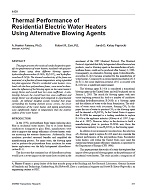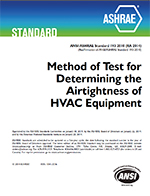“Sick buildings” of the irritating type are receiving increased attention. Occupants complain of deteriorated indoor air quality and of subtle medical symptoms that may be related to the indoor air. The problem seems to coincide with energy economizing. Sensory reactions are typical for the sick building syndrome, and the cutaneous as well as the chemical senses are involved. To evaluate the actual quality of the air in a building, it is imperative to conduct field studies with mobile investigating units. By this approach, reliable field experiments can be performed on representative air samples taken from the building for immediate sensory and chemical analysis. From field experiments conducted in school and office buildings, it is concluded that by the energy-saving reduction in ventilation rate requirements, the margins to sensory irritation indoors have been reduced too far. An outdoor air rate of at least 5-6 liters per second and person is recommended in order to keep indoor odors at reasonably low levels. Recirculation of return air in HVAC systems affects the concentration of air pollutants differently for different compounds. Therefore, ventilation-by-demand systems using a single control substance should be adopted with great caution. If CO2 is chosen as the control variable, the limit value should not be set higher than 0.08 vol percent. Sick buildings are basically a physical environmental problem and not a psychogenic problem. Although sensations predominate in the reactions, the perceptual mechanisms are largely unknown. The indoor air of modern buildings contains complex patterns of pollutants, many of which are potential sensory stimuli. Simple causal relationships are not to be expected. The sick building syndrome may be better understood by assuming that the sensory systems perform a pattern-recognition analysis. A practical conclusion would be that far-reaching homogenization of the indoor climate may result in loss of recognizable stimuli patterns and may lead to sensory confusion. The sick-building syndrome may be partly the result of a change in sensitivity in the populations exposed. Furthermore, the symptoms may result from a summation of numerous subthreshold sensory stimuli or a local increase in receptor stimulation caused by gases-particles interaction, which may be influenced by their electrical charges.
Citation: Symposium Papers, Atlanta, GA, 1984
Product Details
- Published:
- 1984
- Number of Pages:
- 11
- File Size:
- 1 file , 1 MB
- Product Code(s):
- D-AT-84-20-1


